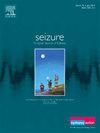一名患有发育性和癫痫性脑病的女孩的新型复合杂合P4HTM变异:首例P4HTM变异相关的癫痫性脑病报告
IF 2.7
3区 医学
Q2 CLINICAL NEUROLOGY
引用次数: 0
摘要
hidea综合征(MIM: #618493)是一种罕见的常染色体隐性遗传病,其特征为张力低下、通气不足、智力残疾、自主神经异常、癫痫和眼睛异常。我们提出的情况下,土耳其女性发展性和癫痫性脑病,突出在P4HTM基因的一种新的复合杂合变异。病例介绍一例6岁11个月的女婴,自新生儿期起就患有早期婴儿癫痫性脑病,眼球运动异常。尽管有严重的发育迟缓和快乐的举止,她却表现出明显的张力低下和自闭行为。基因检测显示,在内含子2中存在一种新的杂合剪接位点变异(c.436+1G>;T)和一种先前报道的错义变异(c.934G> a;P4HTM基因外显子6中的p.E312 K)。影像学显示皮质萎缩,胼胝体薄,未见肌张力障碍。该患者的表型与大多数报道的HIDEA综合征病例一致,但在此类患者中以前没有记录过发展性癫痫性脑病,强调了该病例的独特性。结论本病例首次将P4HTM基因变异与癫痫性脑病联系起来,扩大了HIDEA综合征的表型谱。它强调了对未确诊的发育性和癫痫性脑病进行基因检测和再分析的重要性。本研究中发现的新遗传变异强调了持续基因探索和个性化临床管理的必要性,以改善这种罕见但影响严重的综合征患者的预后。最后,发展性癫痫性脑病、患者的临床表现和脑电图结果之间的联系表明,P4HTM基因具有令人信服的联系。本文章由计算机程序翻译,如有差异,请以英文原文为准。
Novel compound heterozygous P4HTM variants in a girl with developmental and epileptic encephalopathy: First case report of P4HTM variant-associated epileptic encephalopathy
Background
HIDEA syndrome (MIM: #618493) is a rare autosomal recessive disorder characterized by hypotonia, hypoventilation, intellectual disability, dysautonomia, epilepsy, and eye anomalies. We present the case of a Turkish female with developmental and epileptic encephalopathy, highlighting a novel compound heterozygous variation in the P4HTM gene.
Case Presentation
A 6-year and 11-month-old girl with early infantile epileptic encephalopathy and abnormal eye movements since the neonatal period has been presented to our clinic. Despite severe developmental delays and a happy demeanor, she showed significant hypotonia and autistic behaviors. Genetic testing revealed a novel heterozygous splice-site variant (c.436+1G>T) in intron 2 and a previously reported missense variant (c.934G>A; p.E312 K) in exon 6 of the P4HTM gene. Imaging showed cortical atrophy and thin corpus callosum, but no dystonia was observed. The patient's phenotype aligns with most reported cases of HIDEA syndrome, yet developmental epileptic encephalopathy had not been documented previously in such patients, emphasizing the uniqueness of this case.
Conclusion
This case is the first to associate P4HTM gene variants with epileptic encephalopathy, expanding the phenotypic spectrum of HIDEA syndrome. It underscores the importance of genetic testing and reanalysis in undiagnosed developmental and epileptic encephalopathies. The novel genetic variations identified in this study underscore the necessity for continuous genetic exploration and personalized clinical management to improve outcomes for patients with this rare but impactful syndrome. Finally, the association between developmental epileptic encephalopathy, the patient's clinical presentation, and EEG findings suggests a compelling link to the P4HTM gene.
求助全文
通过发布文献求助,成功后即可免费获取论文全文。
去求助
来源期刊

Seizure-European Journal of Epilepsy
医学-临床神经学
CiteScore
5.60
自引率
6.70%
发文量
231
审稿时长
34 days
期刊介绍:
Seizure - European Journal of Epilepsy is an international journal owned by Epilepsy Action (the largest member led epilepsy organisation in the UK). It provides a forum for papers on all topics related to epilepsy and seizure disorders.
 求助内容:
求助内容: 应助结果提醒方式:
应助结果提醒方式:


